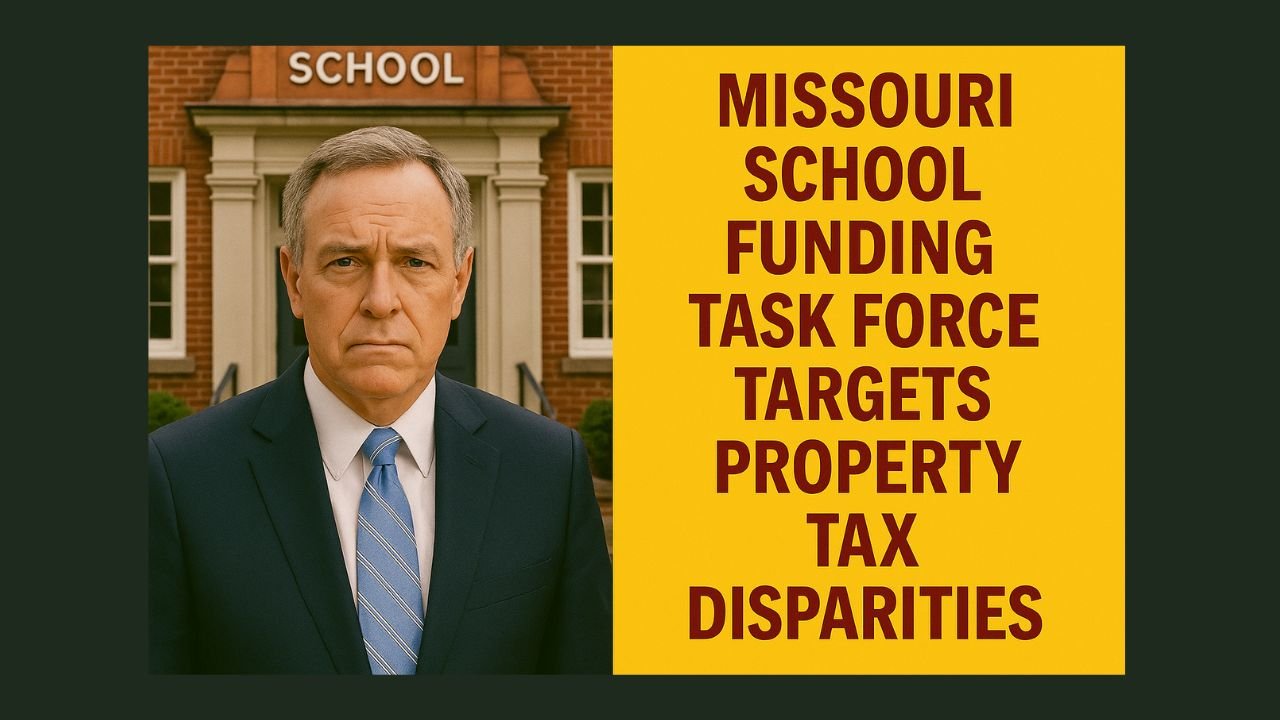The Missouri School Funding Modernization Task Force, formed by Governor Mike Kehoe, has turned its focus toward inequities in property tax revenues that affect how public schools are funded.
During its second official meeting, the group explored how the current formula, in place since 2005, creates funding disparities among districts with varying property values.
Outdated Property Tax Assumptions Drive Inequality
According to Kari Monsees, Deputy Commissioner of the Missouri Department of Elementary and Secondary Education, the funding formula relies on frozen 2005 property values and assumes a uniform local tax rate across all districts.
This creates significant gaps in funding, especially between communities with rapidly growing property values and those that remain economically stagnant.
“The longer we use outdated values, the more distorted and unfair the system becomes,” Monsees emphasized.
Former State Rep. David Wood also noted that updating to current property values could dramatically increase the cost burden on the state—an outcome not supported under the governor’s directive to maintain a flat education budget for fiscal year 2025.
Missouri’s Heavy Reliance on Local Taxes
Missouri ranks seventh nationally for dependence on local property tax revenue, with 47% of school funding coming from local sources. In contrast, only 30% of funding comes from the state.
This reliance, paired with an outdated system, has resulted in winners and losers—districts with high property values and tax levies generate more funds per pupil, leaving other districts at a disadvantage.
Monsees presented data revealing median home values ranging from $44,500 to $613,300, and local levy rates between $2.75 to $6.50 per $100 of assessed value. The assumed levy in the formula, however, remains a fixed $3.43, further distorting actual funding levels.
Hold-Harmless Provision Exacerbates Inequities
Another complicating factor is the “hold-harmless provision”, which ensures districts that would otherwise lose funding under the current formula continue to receive stable aid.
Approximately 200 school districts benefit from this policy, adding up to $150 million annually, according to a study by the nonprofit Aligned.
While this provision protects funding for certain schools, it also prevents the redistribution of resources to districts in greater need. Changing it, however, is politically challenging, as lawmakers are unlikely to support reforms that reduce funding for their local schools.
Recommendations and Next Steps
Three separate studies are under review by the task force, all suggesting major changes to the funding formula. Proposals include:
- Increasing multipliers for special education funding
- Basing funding on enrollment rather than attendance
- Implementing a five-year phase-out for hold-harmless provisions
The task force will continue its work through 2026, with a final plan to be delivered to the governor by December of that year.
Missouri’s outdated education funding formula, based on 20-year-old property values, no longer reflects current economic realities.
As the School Funding Modernization Task Force continues its evaluation, key reforms must address disparities caused by inconsistent property tax bases and ensure equitable funding for all students, regardless of their ZIP code.




